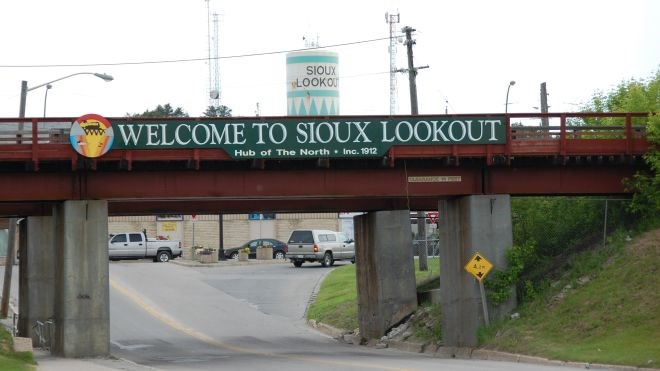Sioux Lookout Mayor Doug Lawrance has fleeting hopes that his town’s plan for a $65-million natural gas pipeline will reach his northwestern Ontario community.
Located 70 kilometres off the Trans-Canada Highway, his is one of 21 communities and numerous First Nations in the region that don’t have direct access to piped natural gas.
A decision by the Ontario Energy Board (OEB) in November dictated that communities wanting to bring natural gas services to local homes and businesses will be saddled with the full costs of the expansion.
The energy regulator’s ruling outraged regional chamber of commerce, policy and municipal groups who argue that those costs should be shared across the entire ratepayer base of the province.
The decision hasn’t totally killed the gas project, said Lawrance, “but if we want it, we have to pay for it ourselves,” an unaffordable scenario given the town of 5,000’s limited the residential and business base.
Without being in “lockstep” with a committed industry partner, he said, there is faint hope “that we’re going to get natural gas anytime soon.”
The community has pinned its natural gas hopes that Rockex Mining’s proposal for a hot briquetted iron (HBI) processing plant, creating hundreds of jobs on the town’s outskirts, would create a business case to justify construction of the pipeline.
In attending last spring’s OEB hearings, Lawrance thought Sioux Lookout delivered a compelling case, even further suggesting that a liquefied natural gas plant be established in town, once the pipeline was in place, to feed outlying communities to the north.
“We were disappointed when we heard this. When natural gas was originally put in the province, I’m sure there were subsidies that spread across many pockets.”
He believes what ultimately influenced the OEB’s decision was a lack of available provincial program funding.
In 2015, three ministries jointly introduced the $200-million Natural Gas Access Loan program in an attempt to encourage those communities, not serviced by natural gas, to bring forth expansion plans.
“It was pretty unlikely they were going to put a third of that into one pipeline to one community,” said Lawrance.
Adding natural gas is critical to attracting private investment to expand the local economic base, he said. “It opens the door for many industries that might not consider it otherwise.”
Pierre Gagne, chairman of Rockex Mining, said should his company advance its $3.8-billion open-pit iron ore mine and mill, access to abundant and low-cost natural gas is a necessity.
The natural gas requirements to run an HBI plant would likely be “double the town’s consumption.”
The company had a financing deal fall apart last summer, but is out to raise money in 2017 for a feasibility study of its Lake St. Joseph mine project.
Although it’s tempting to move the processing to Manitoba, where the price of power is two to three cents per kilowatt hour, Gagne maintains the “preferred place” for the HBI plant is Sioux Lookout and feels confident a solution can be found.
Constructing their own gas pipeline would add to the mine-mill’s overall price tag, Gagne said, but should the final feasibility study greenlight it he would suggest splitting the pipeline costs with Sioux Lookout to provide gas to his development and the town.
“If we advance our project and we need gas in Sioux Lookout…we’ll negotiate what they can do. We can increase the size of the pipe from 10 to 12 inch that would supply the town.”
Gagne, who also runs a heavy construction company in Thunder Bay, the purchasing and installation costs are minimal. “The expensive part is to drill and blast right away, backfill it with sand, and the river crossings.”
For now, Lawrance maintains they have a “flicker of a flame burning” on natural gas.
“We’ll go after other things like enhancing the town’s propane capability, look at programs for residents that might help with conversions to an alternative, more affordable energy source than electricity, and maybe biomass, too if we can get a few of the larger users together like the hospital and school board.”
The OEB’s decision did not impress Kenora Mayor Dave Canfield, president of the Northwestern Ontario Municipal Association (NOMA).
“We made the case that when the natural gas system was first developed across southern Ontario and parts of the North that all of the ratepayers contributed to the cost of creating the existing network,” said Canfield in a news release. “We also argued that it was essential that Northern and rural communities currently without natural gas services should now be treated the same way in order that they can access lower cost energy.
NOMA and a coalition of communities in the northwest point to high heating costs in many towns that rely on electricity, propane or fuel oil.
NOMA’s submission to the OEB said: “Fuel oil is 14 times more expensive and electricity is 27 times more expensive than natural gas to generate the same amount of heat in an area of the province where long periods of minus 20 or lower."
Canfield added that property taxes in many financially struggling northwestern Ontario communities are at a point where many people are finding it difficult to remain in their homes.
He wants the provincial energy minister to instruct the Ontario Energy Board to revisit the decision and stage hearings in Sioux Lookout, Schreiber, Terrace Bay, Manitouwadge and Armstrong “so that they can hear firsthand what the impact of such a policy would be.”




